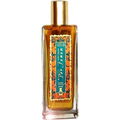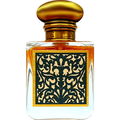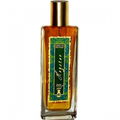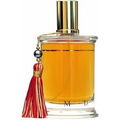05/22/2020

Kovex
17 Reviews
Translated
Show original

Kovex
Top Review
57
Touching the soul
Chypre scents and me, this has always been a difficult topic. Only when I got closer to the topic and became aware of what makes a chypre, I realized that already in my childhood the seeds for an unconscious antipathy were sown. Of course, as a child I did not know at that time that it was the chypre scents that I did not like about my mother.
The smell of wood has always been more appealing to me anyway than the scent of flowers. Even today I often associate chypre with cool-flowery, repellent, unapproachable, strict, distant, and so on. The list of negative attributes would be bigger than the list of positive ones. It was fragrances like Chypre Palatin, Maai or the wonderful Cosmic by Solange Azagury-Partridge that showed me that other instruments are capable of playing a different kind of music.
Right from the beginning Chyprette shows the typical handwriting of Annette Neuffer. The bitter orange she uses so often is at first the only note I can perceive in isolation. As is usually the case with her fragrances, the texture is so closely interwoven, so fluidly merging into each other that individual scents are hardly discernible. A brushstroke of orientalism, which is common to many of her fragrances, also reveals who was at work here.
Chyprette immediately dissolves into a dark green, warming blanket of balsamic-woody notes, changing to brown, which nevertheless identifies the chypre theme with a gentle austerity. I like to blame this part on the oak moss and I also like to clearly perceive the tobacco. Here, however, not the sweet pipe tobacco, but the aromatic-spicy, even bitter, fermented tobacco leaves used for cigars. To my delight, the above-mentioned are all capable of putting a stop to any impression of floridity or even sweetness that may arise.
It is a warm and soft, balsamic and spicy stream of melancholy that resonates in Chyprette. Like the tender strokes of the horsehair of a cello bow over the string, one remains in quiet contemplation of the touching minor key that Chyprette strikes.
This fragrance triggers a wave of comfort in me that is infinitely far from what I wrote above about my associations with Chypres. Chyprette is not repellent or distant, quite the contrary. When I first smelled the fragrance, I couldn't believe how deeply a perfume can touch the soul. It almost made me weep with beauty.
Concerns about the price were charmingly but certainly swept aside. With a mysterious Mona-Lisa smile Chyprette passed all my darlings by, knowing about their inner qualities but not depending on bold expression. Actually I should correct all my 10s ratings downwards, but let's leave that and agree on "Primus inter pares" - the first and the same. An exceptional scent.
The smell of wood has always been more appealing to me anyway than the scent of flowers. Even today I often associate chypre with cool-flowery, repellent, unapproachable, strict, distant, and so on. The list of negative attributes would be bigger than the list of positive ones. It was fragrances like Chypre Palatin, Maai or the wonderful Cosmic by Solange Azagury-Partridge that showed me that other instruments are capable of playing a different kind of music.
Right from the beginning Chyprette shows the typical handwriting of Annette Neuffer. The bitter orange she uses so often is at first the only note I can perceive in isolation. As is usually the case with her fragrances, the texture is so closely interwoven, so fluidly merging into each other that individual scents are hardly discernible. A brushstroke of orientalism, which is common to many of her fragrances, also reveals who was at work here.
Chyprette immediately dissolves into a dark green, warming blanket of balsamic-woody notes, changing to brown, which nevertheless identifies the chypre theme with a gentle austerity. I like to blame this part on the oak moss and I also like to clearly perceive the tobacco. Here, however, not the sweet pipe tobacco, but the aromatic-spicy, even bitter, fermented tobacco leaves used for cigars. To my delight, the above-mentioned are all capable of putting a stop to any impression of floridity or even sweetness that may arise.
It is a warm and soft, balsamic and spicy stream of melancholy that resonates in Chyprette. Like the tender strokes of the horsehair of a cello bow over the string, one remains in quiet contemplation of the touching minor key that Chyprette strikes.
This fragrance triggers a wave of comfort in me that is infinitely far from what I wrote above about my associations with Chypres. Chyprette is not repellent or distant, quite the contrary. When I first smelled the fragrance, I couldn't believe how deeply a perfume can touch the soul. It almost made me weep with beauty.
Concerns about the price were charmingly but certainly swept aside. With a mysterious Mona-Lisa smile Chyprette passed all my darlings by, knowing about their inner qualities but not depending on bold expression. Actually I should correct all my 10s ratings downwards, but let's leave that and agree on "Primus inter pares" - the first and the same. An exceptional scent.
38 Comments




 Top Notes
Top Notes  Bitter orange
Bitter orange Absinth
Absinth Angelica
Angelica Chamomile
Chamomile Bergamot
Bergamot Violet leaf
Violet leaf Heart Notes
Heart Notes  Boronia
Boronia Coffee blossom
Coffee blossom Iris
Iris Jasmine
Jasmine Rose
Rose Tobacco
Tobacco Osmanthus
Osmanthus Sunflower
Sunflower Base Notes
Base Notes  Oakmoss
Oakmoss Cypriol
Cypriol Labdanum
Labdanum Sandalwood
Sandalwood Tonka bean
Tonka bean Ambrette seed
Ambrette seed Cedar
Cedar








 Evannell
Evannell





















